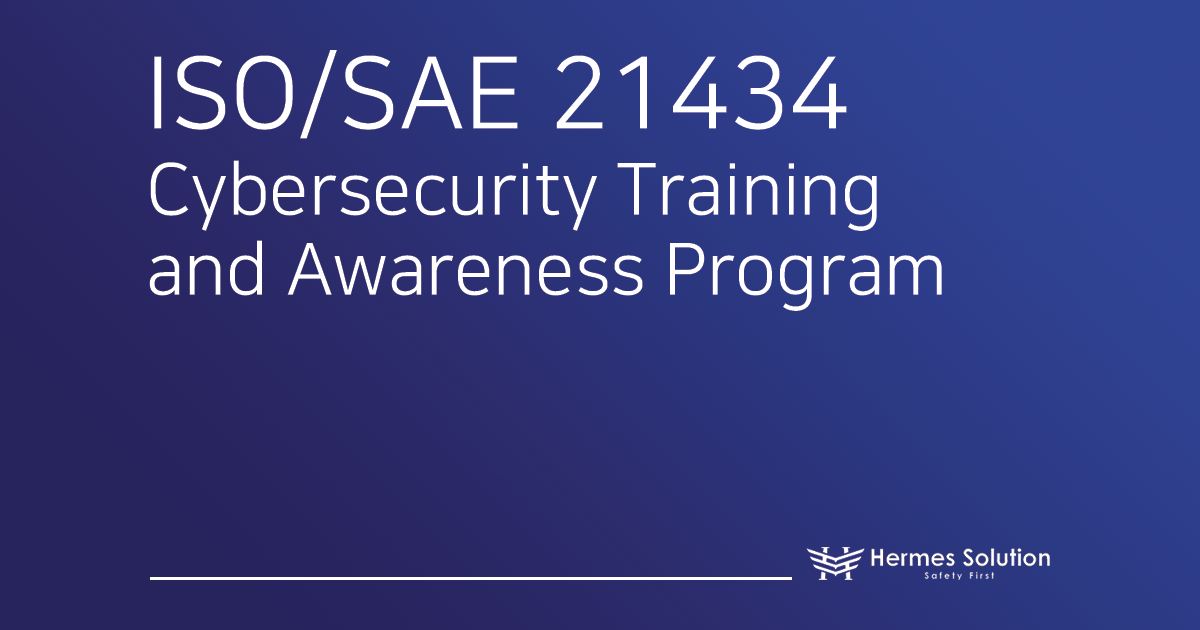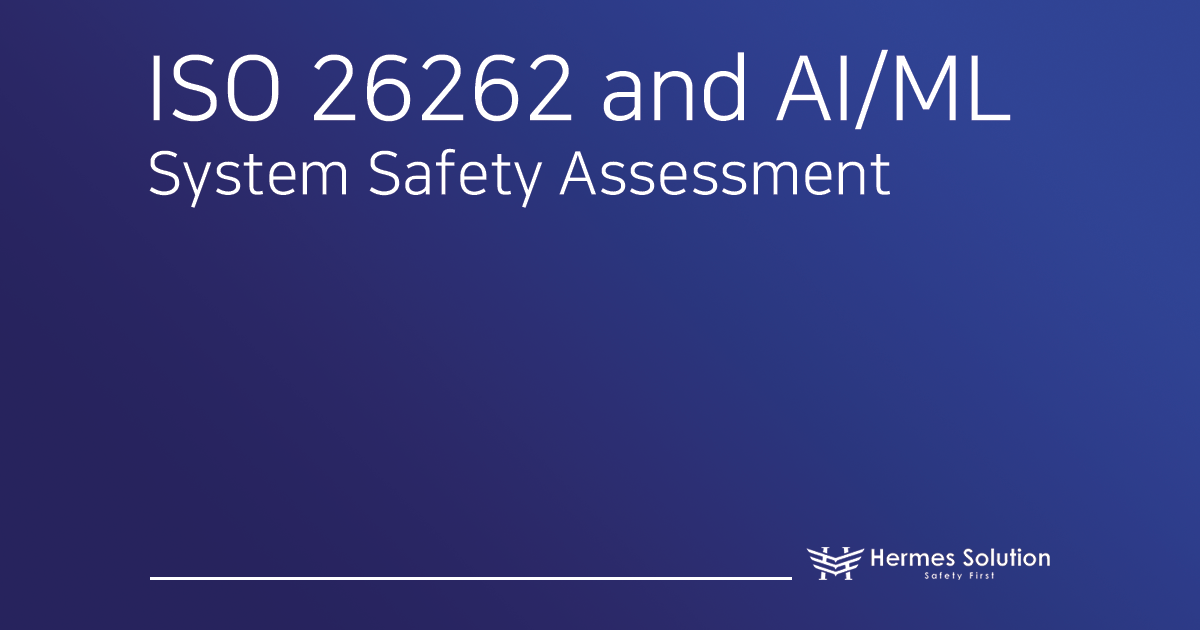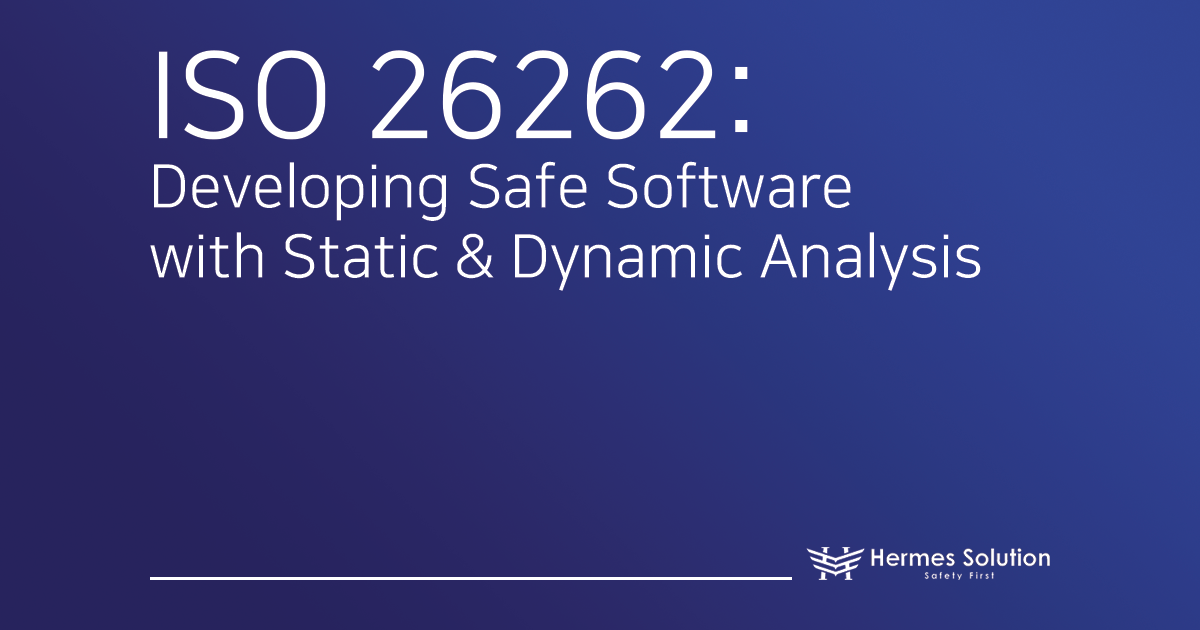Increasing Importance of Automotive Functional Safety and Traceability
The automotive industry’s rapid integration of electrical systems and Advanced Driver Assistance Systems (ADAS) has exponentially increased complexity. Functions such as power steering, ADAS, and ABS no longer rely solely on mechanical components but are driven by sophisticated mechatronic systems. Although these integrated systems enhance driving convenience and safety, they simultaneously elevate the risks of system errors and malfunctions, leading to potential accidents. Consequently, the importance of functional safety to minimize the risk of accidents caused by electronic system malfunctions and to protect drivers and other road users has become paramount. Within this context, the ISO 26262 standard offers international guidelines for automotive functional safety, highlighting the critical role of safety requirements traceability. This content from Hermes Solution aims to explain the key concepts of ISO 26262, emphasize the importance of traceability of safety requirements, explore practical management methods and tools, and present best practices, including Excel-based traceability solutions, to enhance reader understanding.
Overview of ISO 26262 Standard: Essential Understanding for Automotive Professionals
ISO 26262, established by the International Organization for Standardization (ISO), is an international standard for the functional safety of electrical and electronic (E/E) systems in road vehicles. It provides guidelines automotive manufacturers and suppliers must follow when developing in-vehicle E/E systems, aiming to identify potential risks through a risk-based approach and establish safety goals accordingly. ISO 26262 covers the entire vehicle lifecycle, from concept and development through production, operation, service, and disposal. Notably, the standard introduces Automotive Safety Integrity Levels (ASIL), classifying risks based on severity, exposure, and controllability by the driver. ASIL categories range from A to D, with QM (Quality Management) indicating no safety relevance. Although compliance is sometimes influenced by national regulations or automotive manufacturer policies, ISO 26262 effectively holds legal weight, making it essential for ensuring the safety of increasingly complex automotive E/E systems.
Definition and Importance of Automotive Functional Safety Requirements Traceability: Core of ISO 26262 Compliance
In ISO 26262, traceability of safety requirements refers to the ability to track and document the lifecycle of requirements throughout the entire development process, from initial requirement definition through system design, implementation, integration, verification, validation, operation, maintenance, and disposal. Traceability begins at the origin of requirements, extending through development and specification to final deployment, use, continuous improvement, and iteration processes, enabling bidirectional tracking. This capability is crucial for demonstrating ISO 26262 compliance. In fact, traceability is not merely recommended but mandated as an industry standard requirement, crucial for ensuring product quality, safety, and regulatory compliance. Effective traceability is essential for managing modern automotive systems’ growing complexity. Verifying each safety requirement’s accurate implementation and validation across countless interconnected components and software elements is challenging, and traceability provides the systematic framework needed to manage this complexity effectively.
Why is Safety Requirements Traceability Necessary?
Automotive functional safety traceability management is critical for several reasons. First, it ensures that all safety requirements are correctly reflected and implemented during the development process. Traceability connects each requirement to design elements, code, and test cases, demonstrating accurate reflection in the final product. Second, it facilitates verification and validation activities. Linking requirements to test cases ensures comprehensive testing, while connecting test results back to requirements streamlines verification processes. Third, it enables effective change management and impact analysis. When requirements change, traceability allows rapid assessment of effects on system components, prompting appropriate responses. Fourth, traceability contributes to improved product quality, early detection of development defects, and reduced rework. Clearly linking requirements, designs, implementation, and tests aids early identification and resolution of errors and inconsistencies. Finally, it simplifies auditing and certification processes. Traceability information serves as critical evidence in demonstrating compliance with standards like ISO 26262.
Various Techniques and Tools for Managing Safety Requirements Traceability
Several techniques and tools are available to manage safety requirements traceability. Basic techniques include forward traceability, backward traceability, and bidirectional traceability, which combines both. Forward traceability tracks the flow from requirements to design, implementation, and testing, whereas backward traceability identifies original requirements from test results or implementation details. Bidirectional traceability combines these approaches, facilitating the management of a requirement’s entire lifecycle. Tools supporting traceability management include Requirements Management tools, Application Lifecycle Management (ALM) tools, and Test Management tools. Requirements Management tools such as IBM DOORS, Jama Connect, and Modern Requirements specialize in capturing, structuring, and tracing requirements. ALM platforms like Visure Requirements integrate requirements management with design, testing, risk factors, and other development artifacts. Test management tools like TestRail and Parasoft simplify traceability between requirements, test cases, and test results. Specialized tools such as Parasoft, Visure, IBM DOORS, PTC Codebeamer, Siemens Polarion, and Wind River Studio offer diverse functionalities specifically for automotive safety, including automated link creation, traceability matrix generation, and reporting.
Managing Safety Requirements Traceability Using Excel Without Software Tools
For small-scale projects or initial stages, Excel can effectively manage basic safety requirements traceability. Creating an Excel-based Requirements Traceability Matrix (RTM) typically involves the following steps: First, compile a clear list of requirements, each with a unique ID. Next, identify related design documents and test cases, assigning unique IDs to each development artifact. An Excel spreadsheet should include columns for Requirement ID, Description, Priority, Test Case ID, Test Result, Status, and Remarks. Manually link the requirements to relevant development artifacts, using the Status column to track progress.
Example of an Excel-based Requirements Traceability Matrix:
Managing traceability in Excel can be useful for smaller projects, but as projects grow in size and complexity, the potential for manual errors increases and management efficiency decreases significantly. Therefore, it is more efficient to use a dedicated traceability management tool for complex projects. Best practices for managing traceability in Excel include using clear and measurable requirements, maintaining consistent formats and identities, reviewing and updating the matrix regularly, involving the entire team, documenting changes and reasons, and utilizing filtering and sorting features.
Benefits of effective traceability management
Effective safety requirement traceability management provides a number of benefits during automotive development. First, it improves the safety and reliability of automotive systems. By ensuring that all safety requirements are implemented and properly tested, it reduces the potential risk of the system and minimizes the likelihood of an accident occurring. Second, it reduces development costs and time. By finding and fixing errors at an early stage, you can reduce rework and streamline testing to shorten the overall development cycle. Third, it contributes to better recall management and reduced liability. By quickly identifying affected parts and vehicles when issues arise, you can narrow the scope of recalls, save money, and reduce potential legal liability. Fourth, it enhances collaboration and communication across development teams and the supply chain. The status and changes to requirements are shared and understood by all stakeholders, reducing misunderstandings and facilitating efficient collaboration.
How traceability information is utilized in later stages of development
Automotive functional safety requirement traceability information is very useful in the later stages of development. In the design phase, it is used to verify that the requirements are correctly reflected in the design elements. Traceability allows you to validate that the design meets the original requirements and avoid unnecessary or incorrect designs. The software testing phase links requirements to test cases to ensure that each requirement is validated with the appropriate test cases. For example, for the requirement “The vehicle must come to a complete stop within 0.5 seconds in case of emergency braking,” test cases are written to verify that the requirement is satisfied, and the test results are recorded in a traceability matrix, which allows you to measure test coverage and identify requirements that are missing tests. The software update and maintenance phase is utilized to analyze the impact of changes and ensure that new code does not compromise existing safety features. By tracking changed requirements, you can identify the design elements, code, and test cases involved and make the necessary corrections.
Challenges and issues in managing safety requirement traceability
Managing automotive functional safety requirement traceability can present a number of challenges and issues. In large projects, it can be very complex and difficult to establish and maintain relationships between numerous requirements and work products. To overcome these challenges, you may consider synchronizing data between tools via API integrations or adopting an integrated ALM solution. Keeping traceability links up to date is also a significant challenge if requirements change frequently during development. Effective traceability requires a significant investment of time and money, and manual tracking methods are prone to errors. Additionally, it can be difficult to effectively manage traceability information if the various tools used in development don’t integrate with each other. For example, if requirements management tools, design tools, code repositories, and test management tools are separate, it can be cumbersome to manually manage links between each tool.
Best practices for automotive functional safety requirements traceability management according to ISO 26262
There are several best practices for managing automotive functional safety requirement traceability according to ISO 26262. First, it is important to establish clear and well-defined requirements. Vague or unmeasurable requirements make traceability difficult to achieve. Second, you should implement bi-directional traceability wherever possible. This allows you to see the full lifecycle of a requirement and effectively analyze the impact of changes. Third, consider utilizing an automated traceability management tool, which will efficiently create and maintain traceability links and reduce the likelihood of errors. Fourth, traceability data should be reviewed and audited regularly to ensure its accuracy and completeness, and to identify and correct missing or incorrect links. Finally, you need to ensure traceability between requirements and development deliverables at all levels: system, hardware, and software. You need to maintain links between system requirements, software requirements, and hardware requirements, as well as all related work products, such as design documents, code, and test cases.

Automotive functional safety requirement traceability is a key element of compliance with the ISO 26262 standard and an essential management technique for ensuring the safety and reliability of automobiles. In an automotive system development environment of increasing complexity, effective traceability management reduces errors, increases development efficiency, minimizes recall risk, and facilitates regulatory compliance. While tools such as Excel can be utilized to achieve basic traceability, for larger and more complex projects, it is more effective to use dedicated, automated tools. To manage safety requirement traceability according to ISO 26262, it is important to follow best practices such as defining clear requirements, implementing bi-directional traceability, utilizing automated tools, conducting regular reviews and audits, and ensuring traceability between requirements and work products at all levels. Traceability of safety requirements is a key factor in ensuring the safety of automotive systems, and will become increasingly important as autonomous driving technology evolves. Be more efficient and organized with a trusted partner, Hermes Solutions.










